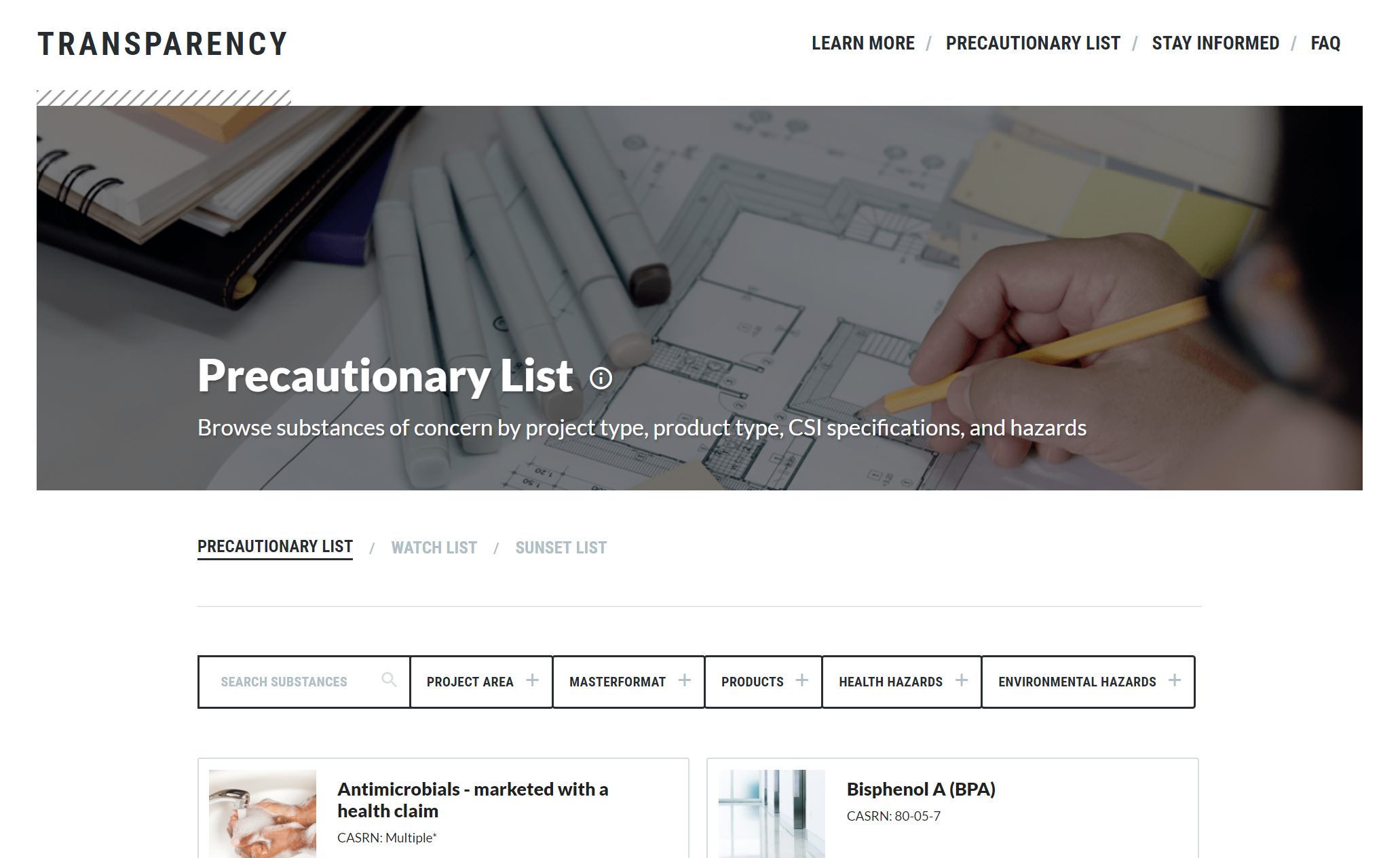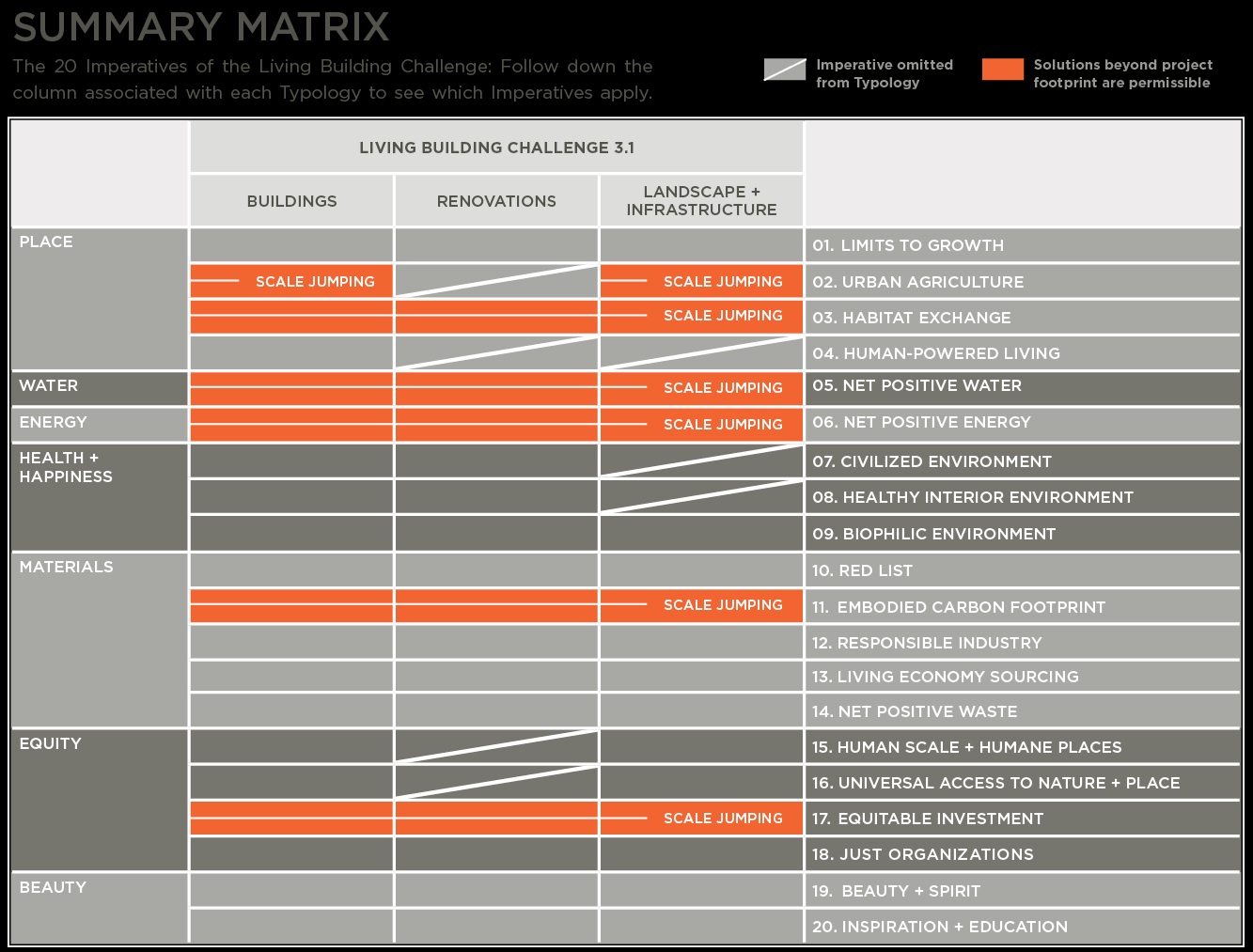Recently we began a series on toxic building materials. Many building products found in both old and new homes are not good for us. They can negatively affect our indoor air quality, cause long-term health conditions, or even worse. Since these materials pose a problem that affects almost everyone, let us arm ourselves. In following are some powerful tools to help identify problem building materials.
Transparency Tool
The international architecture firm Perkins+Will has developed a powerful online tool called Transparency which is an online database-style layout for doing quick product research. Transparency is wonderful to use anytime you are in doubt whether a building material is toxic or potentially harmful to your home or the natural environment.
The Transparency tool contains three categories of products, based on their potential for harm and availability:
Precautionary List - The place to start your research into chemicals/materials that are toxic for use in building construction. These correlate rather closely to the Red List materials that we will discuss later in this post.
Watch List - Substances that are under close scrutiny. Whether they are harmful or not has not been proven yet. Products containing these materials should not be considered safe.
Sunset List - Substances of limited impact to the marketplace. These are no longer in widespread use, and there are often regulatory measures in place that are assisting in their elimination. One day their hope is all products from the others lists will be in this category.
Screenshot: Click image above to launch Transparency
I like to use the "Products" tab as a quick reference when I am curious about potential toxins lurking in materials for my home. This tool is well worth poking around for a bit. I think it is one of the very best resources available to better understand which toxins affect the places we dwell. I would love to hear some feedback in the Comments below on how you discovered something interesting through this tool. I am learning too...
The Living Building Challenge: Introduction
The International Living Future Institute is an organization committed to sustainable building practices and industry transformation. Among their education and initiatives, "The Living Building Challenge envisions a future where all materials in the built environment are regenerative and have no negative impact on human and ecosystem health." (Source: https://living-future.org/lbc/materials-petal/#10-red-list)
The Living Building Challenge (LBC) is the preeminent green building certification program because it is based on 12-months actual performance after occupancy. It is not a point system based on the designed performance and purchasing "green elements" like bike racks, certified lumber and green roofing (ie. LEED rating system). Instead, it offers a holistic opportunity for sustainable buildings through seven performance areas called Petals. The Petals are as follows: Place, Water, Energy, Health+Happiness, Materials, Equity, and Beauty.
A Certified Living Building should be thought of as a living flower. I love this analogy. A building constructed to this standard will have no net impact on the earth through its existence, which is the ultimate mark of the standard and one that makes it worth real consideration.
Each Petal of the Green Building Challenge is further divided into Imperatives. (See chart above.) These Imperatives vary a bit based on the typology of the building. For the Materials Petal, the key Imperatives are as follows: 10) Red List, 11) Embodied Carbon Footprint, 12) Responsible Industry, 13) Living Economy Sourcing, and 14) Net Positive Waste.
The Red List
Image source: https://www.abodo.co.nz/resources/articles/the-red-list-materials-to-watch-out-for
Per the first Imperative on the Materials Petal, below are the Living Building Challenge Red List Materials/Chemicals (visit this link to get an overview of each listed item). Just like a red light, this list is composed of materials that must be stopped! They are not healthy to build with and similarly are unhealthy to our planet. Of course, this makes sense if you think about our lives and the earth intertwined as one.
I have taken some liberty to link each item from the Red List to the aforementioned Perkins+Will Transparency listing of Precautionary Materials as well as Wikipedia and ToxTown. The goal of linking you to these places is to get a high-level view of each material and provide a little contrast in viewpoint.
• Alkylphenols
• Asbestos (Wikipedia)
• Bisphenol A (BPA)
• Cadmium
• Chlorinated Polyethylene and Chlorosulfonated Polyethylene
• Chlorobenzenes
• Chlorofluorocarbons (CFCs) and Hydrochlorofluorocarbons (HCFCs)
• Chloroprene (Neoprene)
• Chromium VI
• Chlorinated Polyvinyl Chloride (CPVC)
• Formaldehyde (added)
• Halogenated Flame Retardants (HFRs)
• Lead (added)
• Mercury
• Polychlorinated Biphenyls (PCBs)
• Perfluorinated Compounds (PFCs)
• Phthalates
• Polyvinyl Chloride (PVC)
• Polyvinylidene Chloride (PVDC)
• Short Chain Chlorinated Paraffins
• Wood treatments containing Creosote, Arsenic or Pentachlorophenol
• Volatile Organic Compounds (VOCs) in wet-applied products
A Nutrition Label for Building Materials
Declare® is essentially a product nutrition label set up to make Living Building Challenge material selections easier for homeowners, architects, and builders. It is a voluntary platform for material producers. Check this out by simply searching for the product you are interested in finding (e.g. carpet).
Cradle to Cradle
Another product certification system/database worth mentioning is Cradle to Cradle product certification. If you have not read William McDonough and Dr. Michael Braungart's book "Cradle to Cradle", you should.
In 1992, William McDonough and Dr. Michael Braungart published The Hannover Principles: Design for Sustainability. In 2002, they published Cradle to Cradle: Remaking the Way We Make Things, encapsulating a journey of discovery about materials as biological or technical nutrients and their use periods and their evolution. They created a framework for quality assessment and innovation: the Cradle to Cradle Certified™ Products Program.
In 2010, after 20 years of working with companies, they saw a need to scale up the transformation. They gifted a license to the certification system and methodology to the public through the creation of the Cradle to Cradle Products Innovation Institute. The non-profit Institute is an agent of change through open source information. (Source: https://www.c2ccertified.org/about)
Close
I hope that you have enjoyed researching any potential building materials you have been concerned with inside your home. Maybe if you are considering a remodel, you can avoid adding any additional toxic/biological burden for your family. I have been enjoying learning along with you.
Looking ahead, Part 3 will cover toxic materials in historic and existing properties.
What are your thoughts on these resources? If you have others to share, please share them with us in the Comments below. Thank you for reading.





